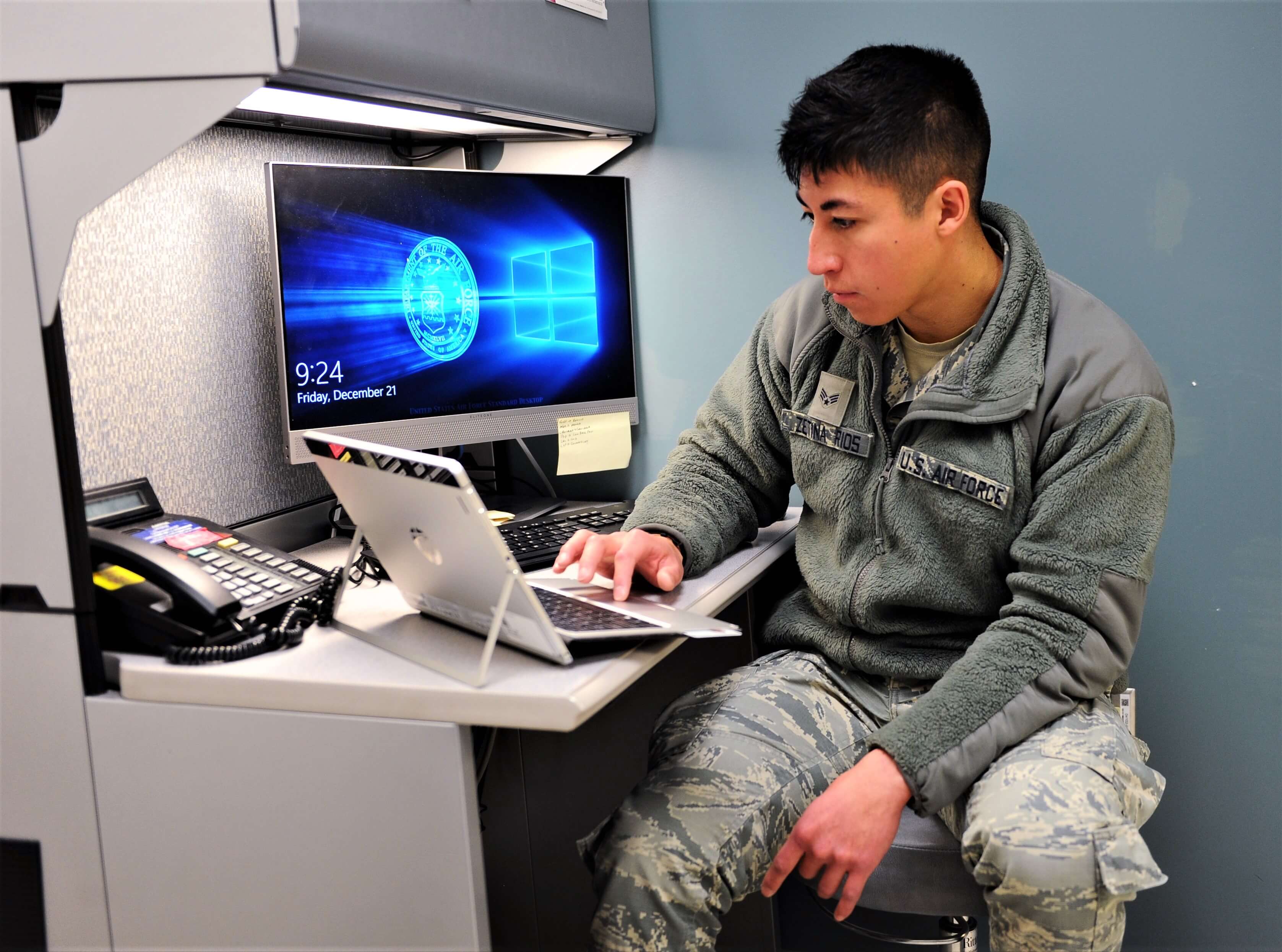10th Medical Group at Air Force Academy enhances patient care with mobile computing

Senior Airman Luis Zetina-Rios, a medical technician at the U.S. Air Force Academy’s Family Health Clinic, uses mobile computing Dec. 21, 2018 to improve patient services. (U.S. Air Force photo by Jennifer Spradlin)
By Jennifer Spradlin, Dec. 26, 2018
U.S. AIR FORCE ACADEMY, Colo. — Health care providers at the Air Force Academy Clinic are using new technology today to increase efficiency.
The Medical Information Services Flight Team collaborated with 22nd Century Technologies to create a mobile computing solution that unchained health care providers from their desks and reduced the need for paper documentation.
“The mobile tablet allows me to have all the necessary patient data, such as X-rays and Digital Imaging and Communications in Medicine images, to illustrate patient care without leaving the exam room,” said Lt. Col. Ross Schumer, 10th Medical Group orthopedic surgeon.
Before the upgrade, clinicians hopped from computer to computer to process patient information. It was frustrating and time-consuming .
One physician at the Academy estimated that mobile computing saves him five minutes per patient. He sees, on average, 90 patients a week — gaining back more than seven hours over the course of a week. That time, he explained, could be invested in developing stronger relationships with his patients.
“Patients are beginning to recognize the tablet and are impressed with how productive it is during an appointment,” said Maj. Trevor Peterson, Family Health Team 2 provider. “It has definitely increased patient satisfaction and patient communication.”
According to Scott Beiser, an internet technology project manager at the Academy, other military treatment facilities in the area, including Fort Carson and Buckley, Peterson and Schriever Air Force Bases, are interested in the mobility project.
“We are significantly changing the patient experience with mobile technology and refocusing the attention on delivering the best care to our patient,” Beiser said.
As of June 2018, 10 departments and more than 130 users are working with the mobile tablets to perform their core duties.
[Editor’s Note: Scott Beiser contributed to this report.]